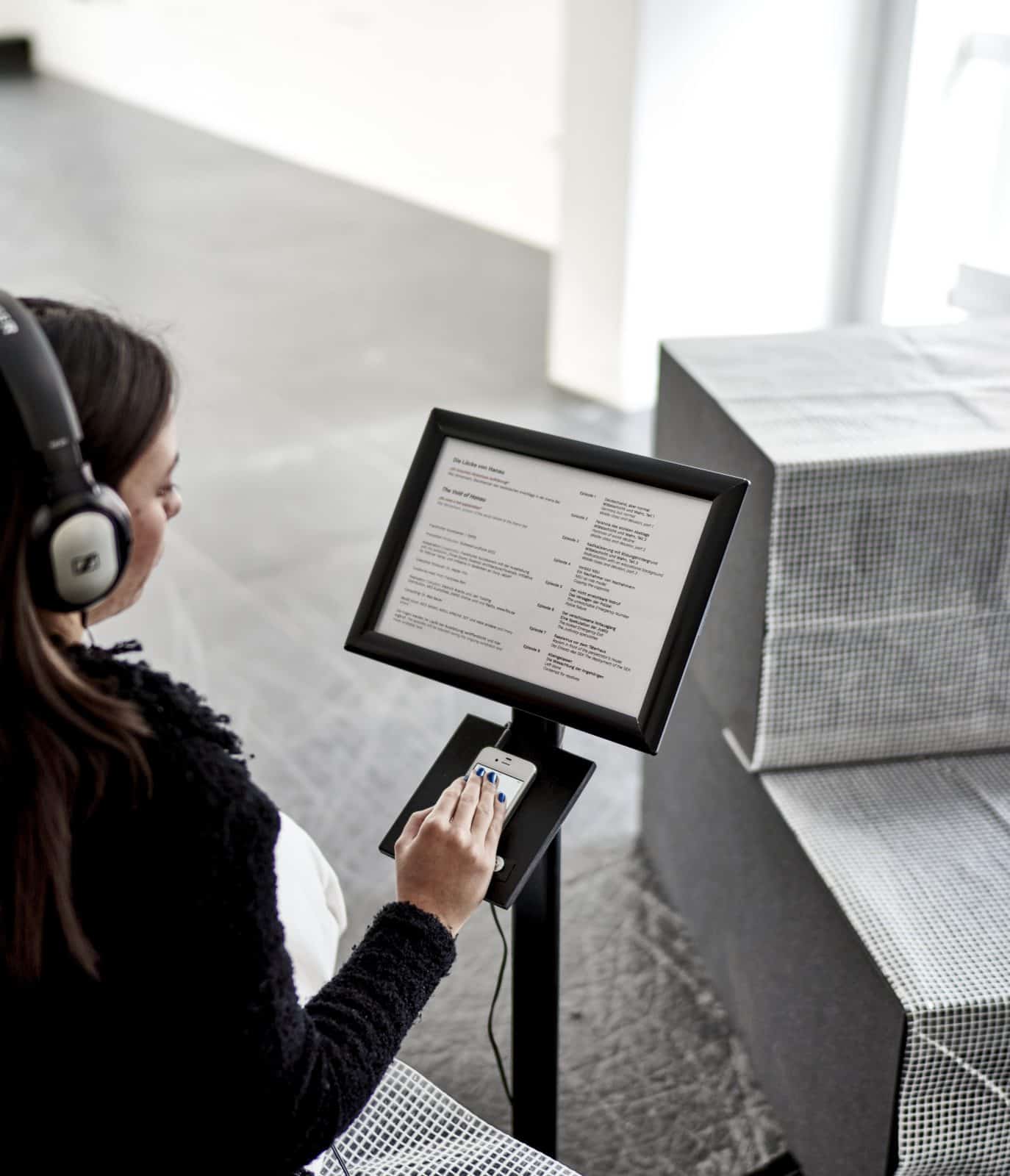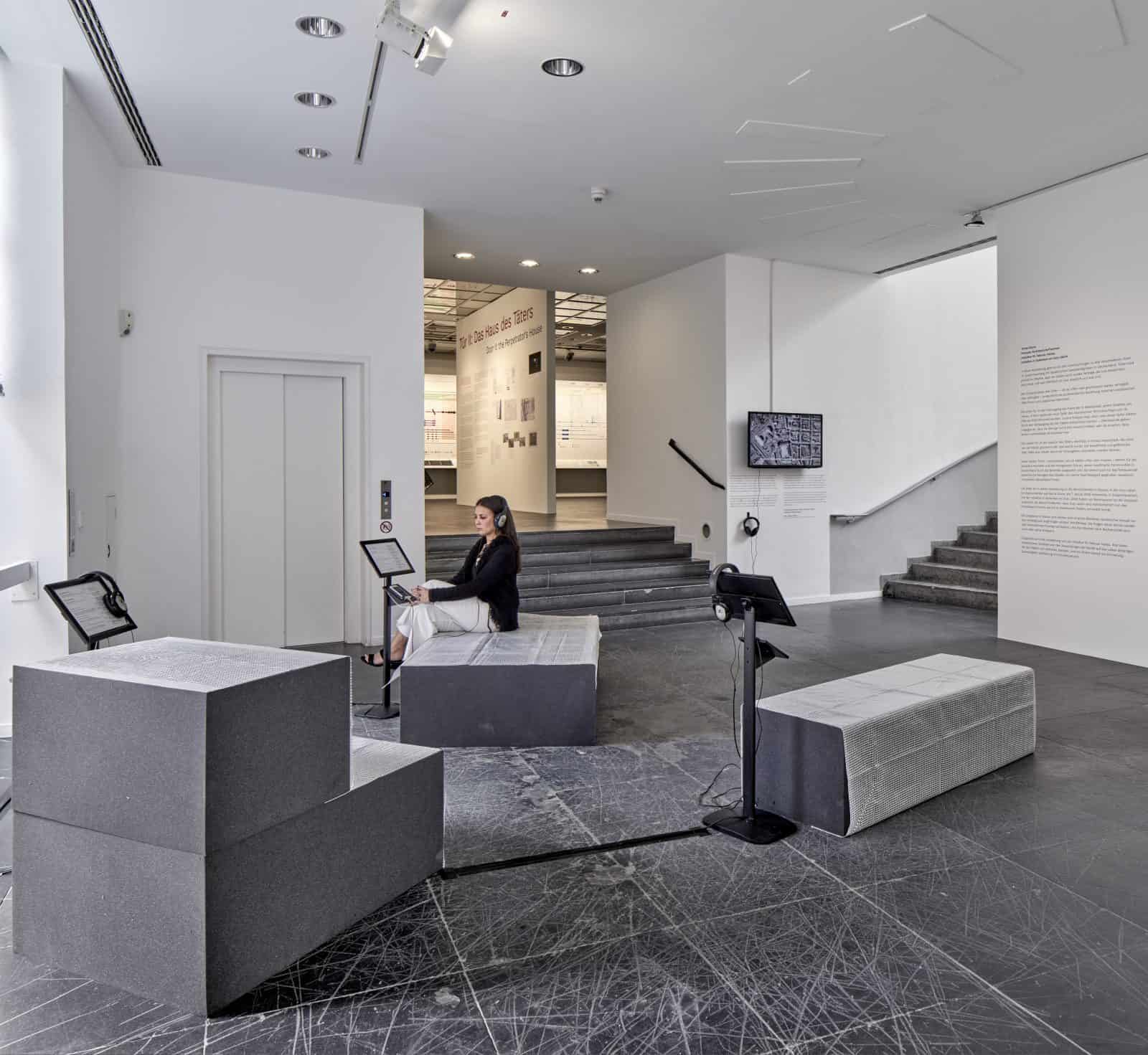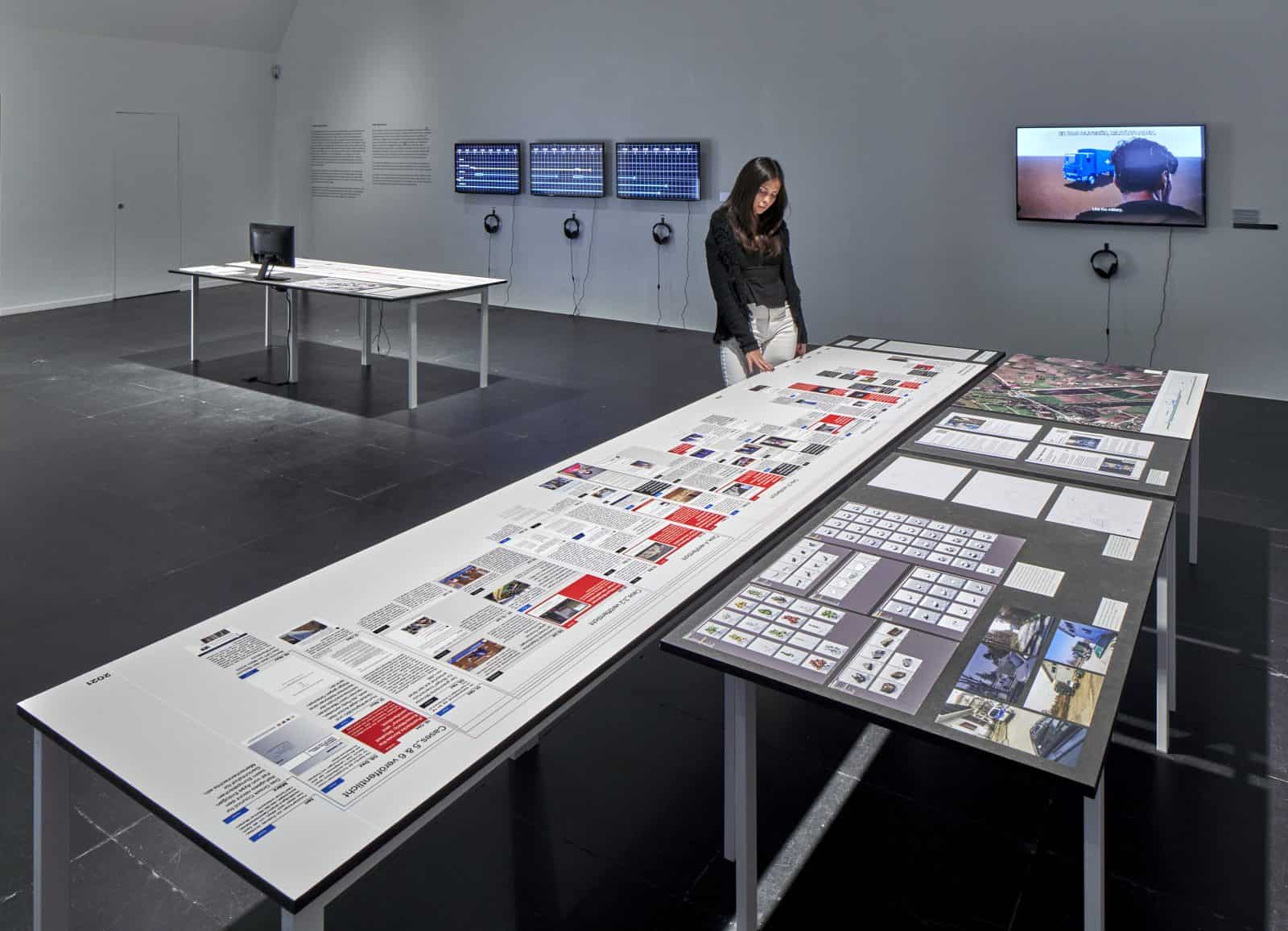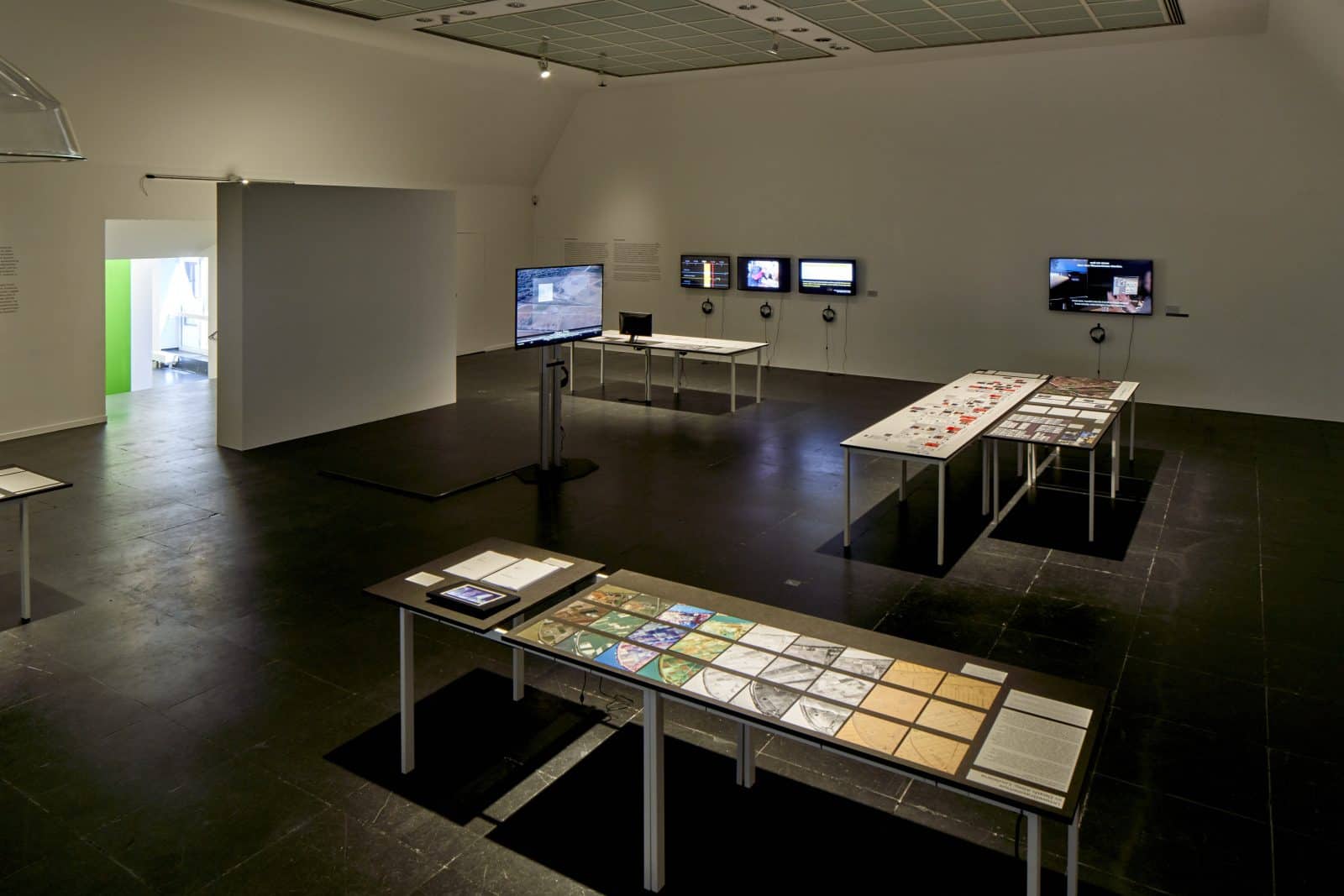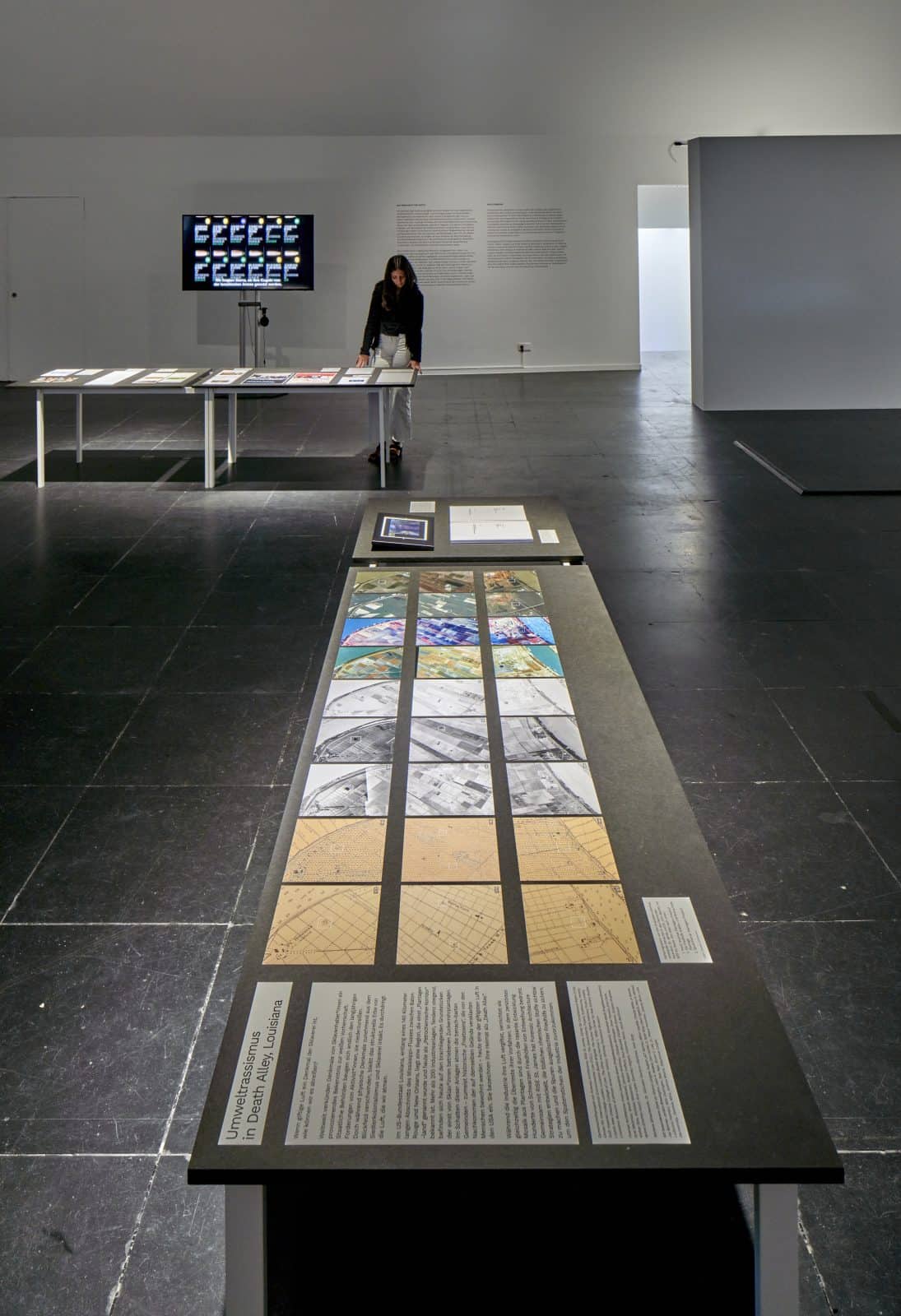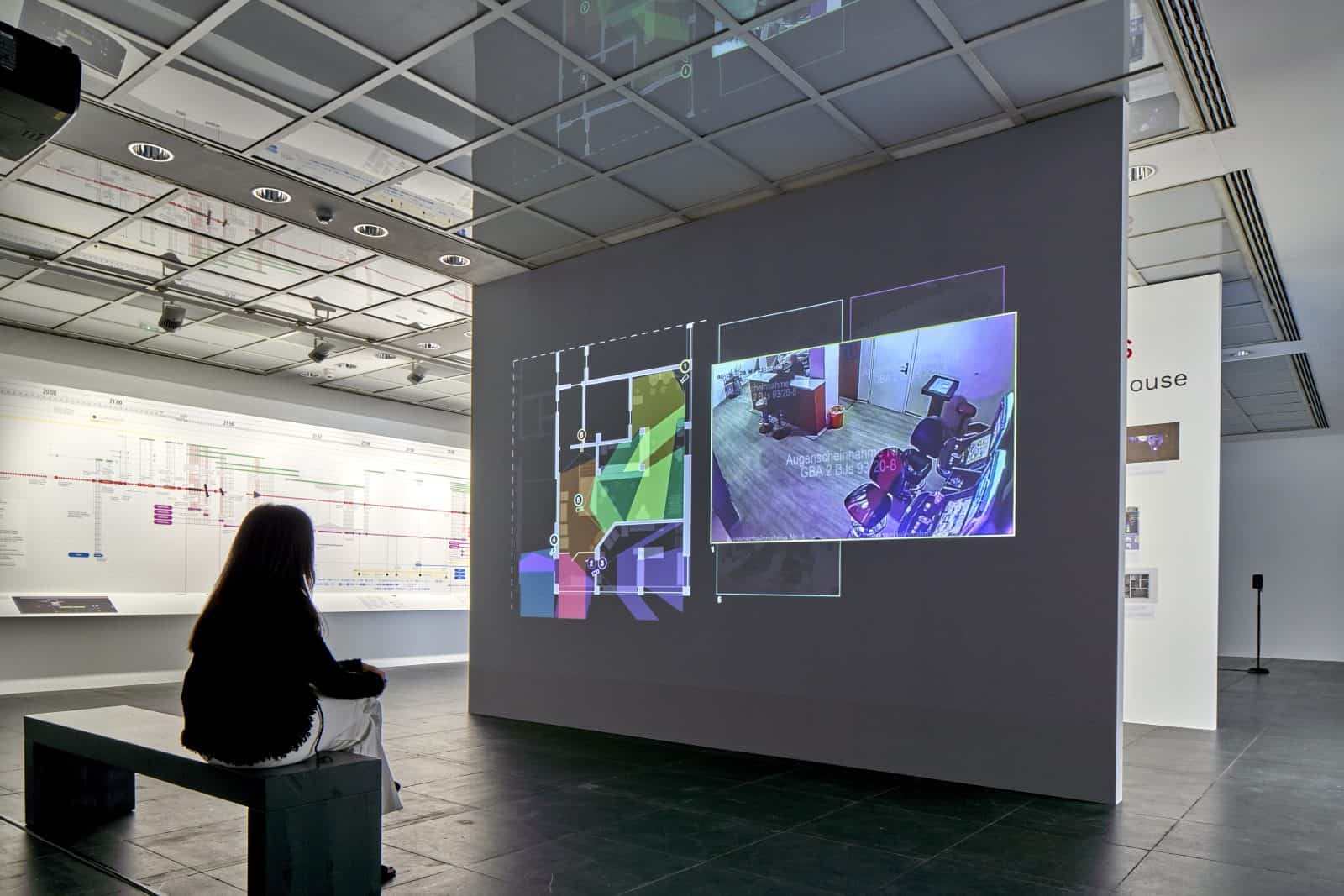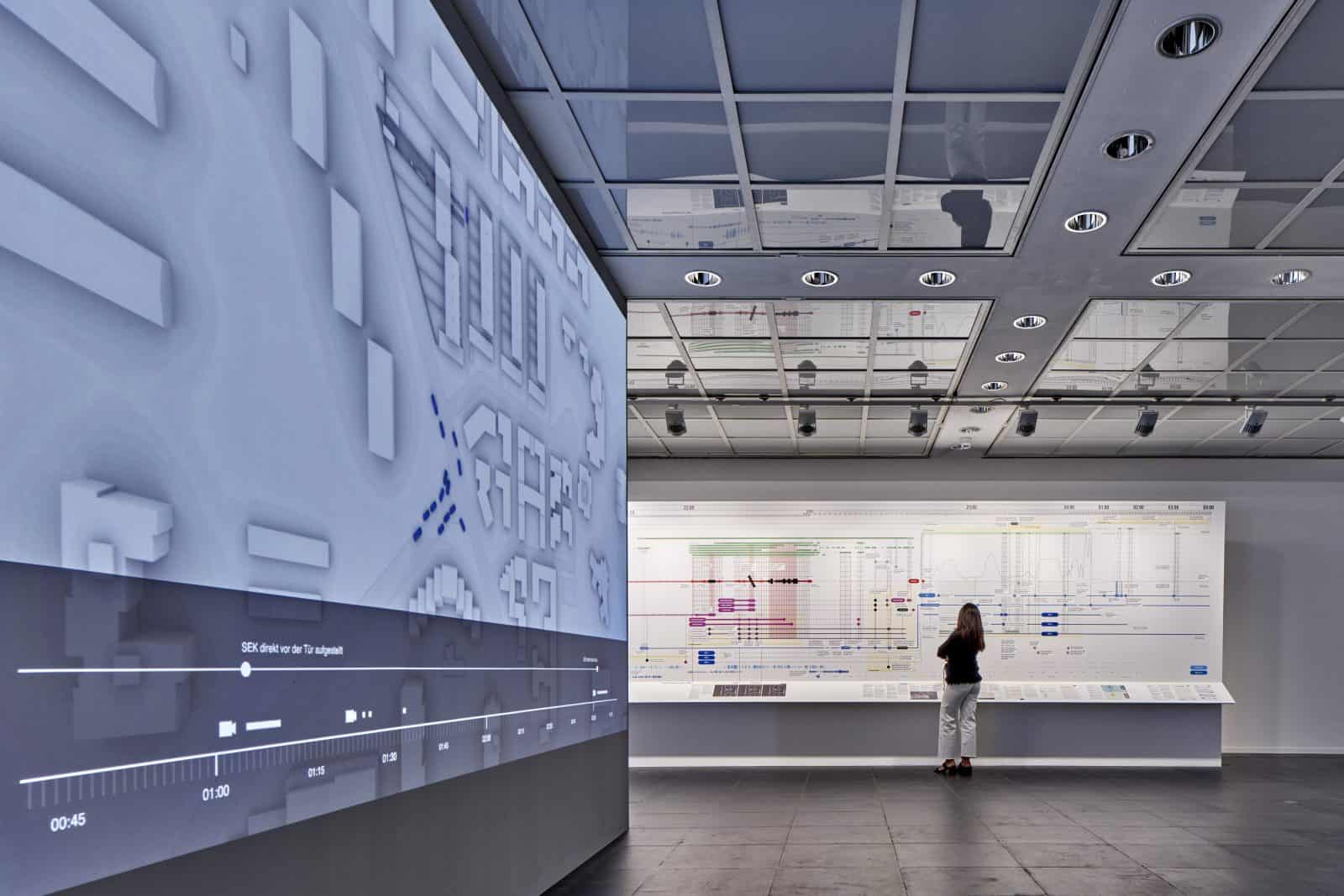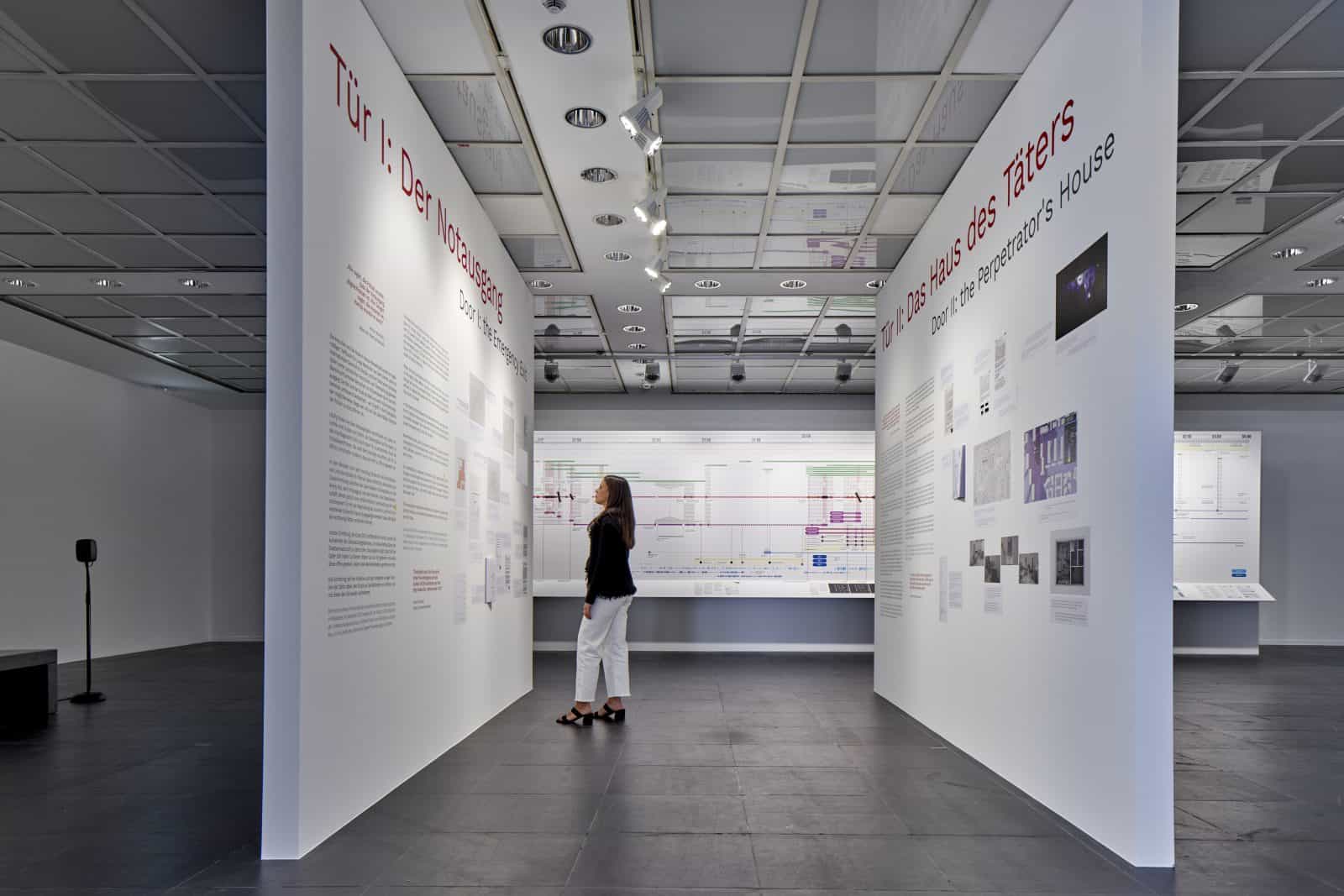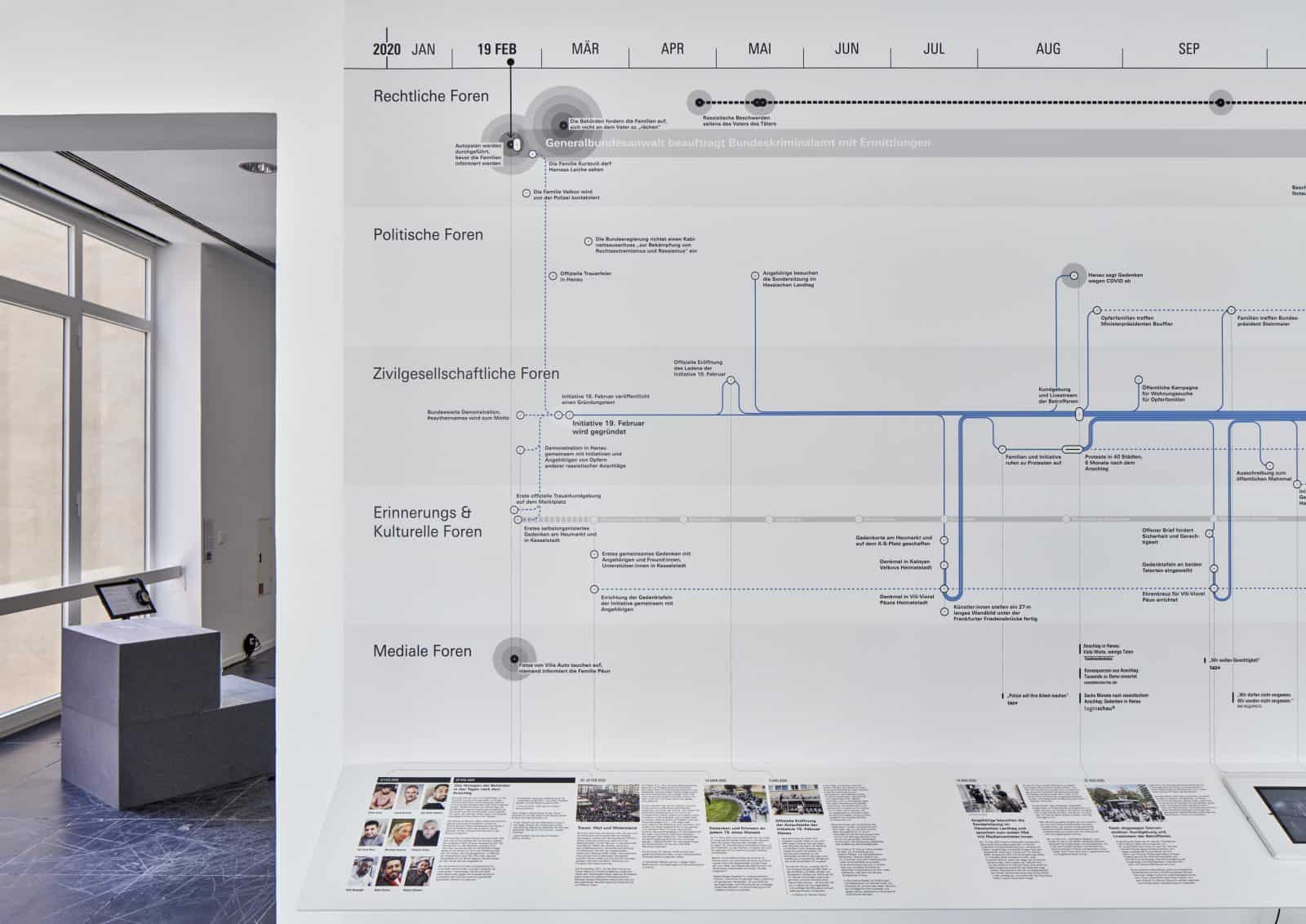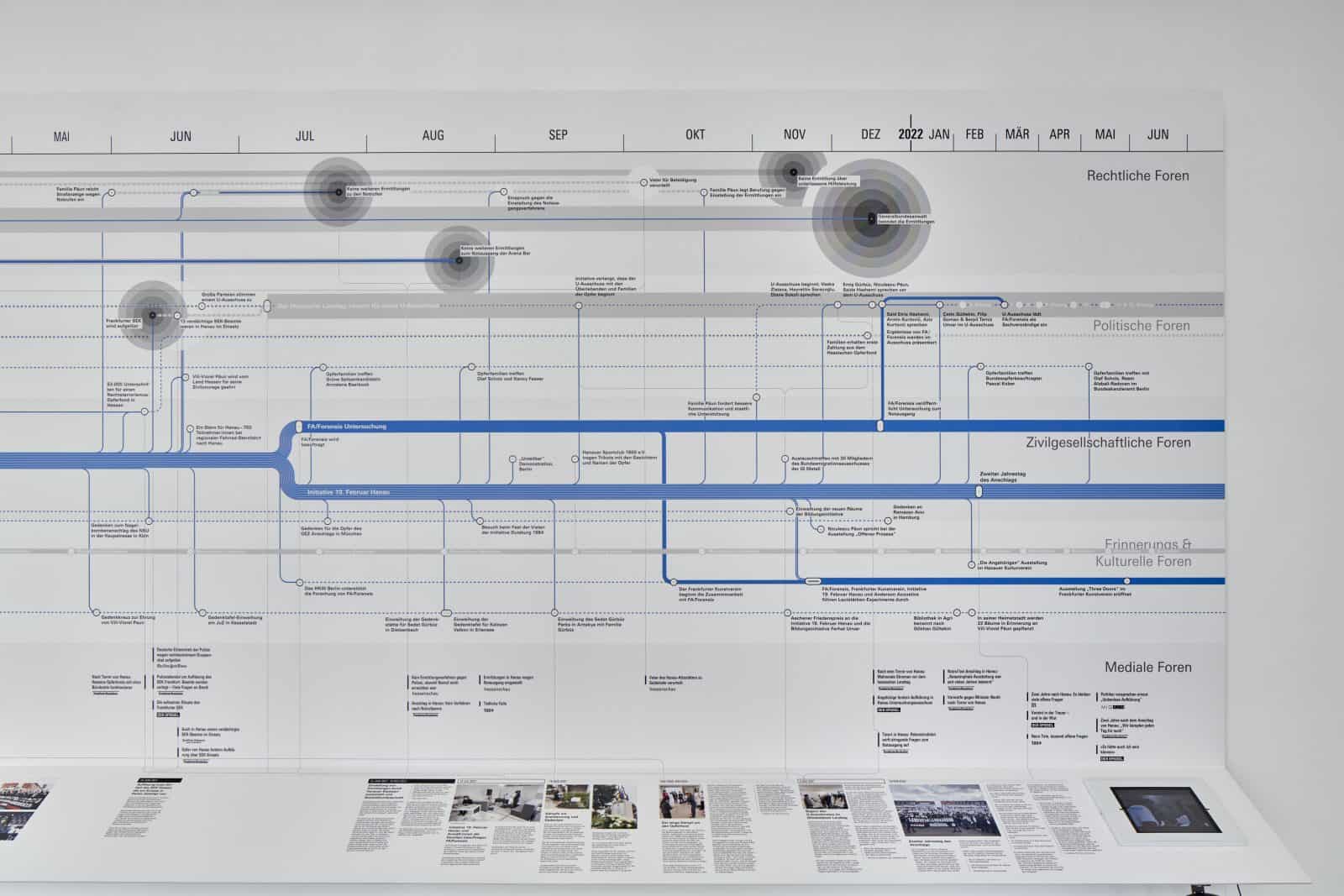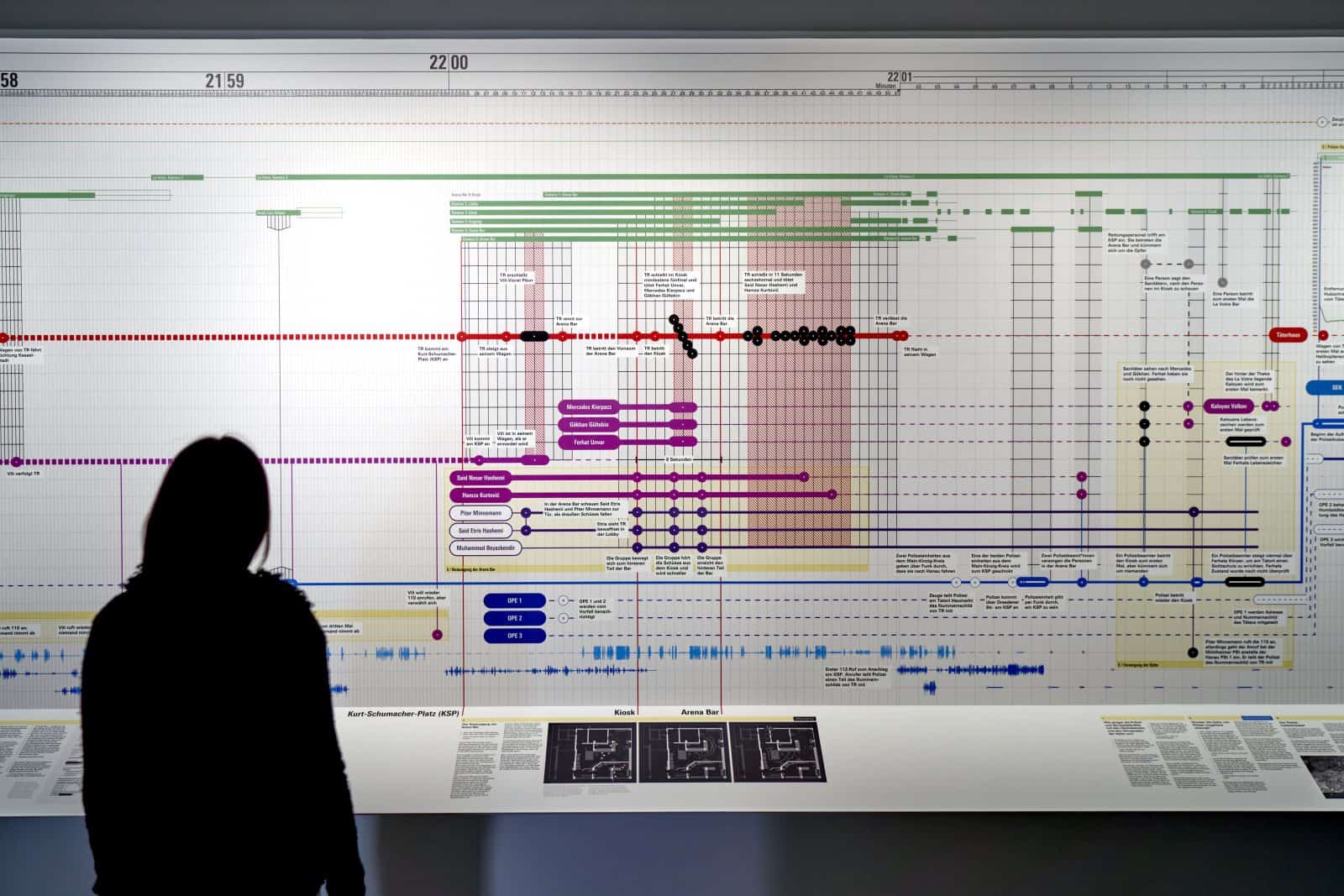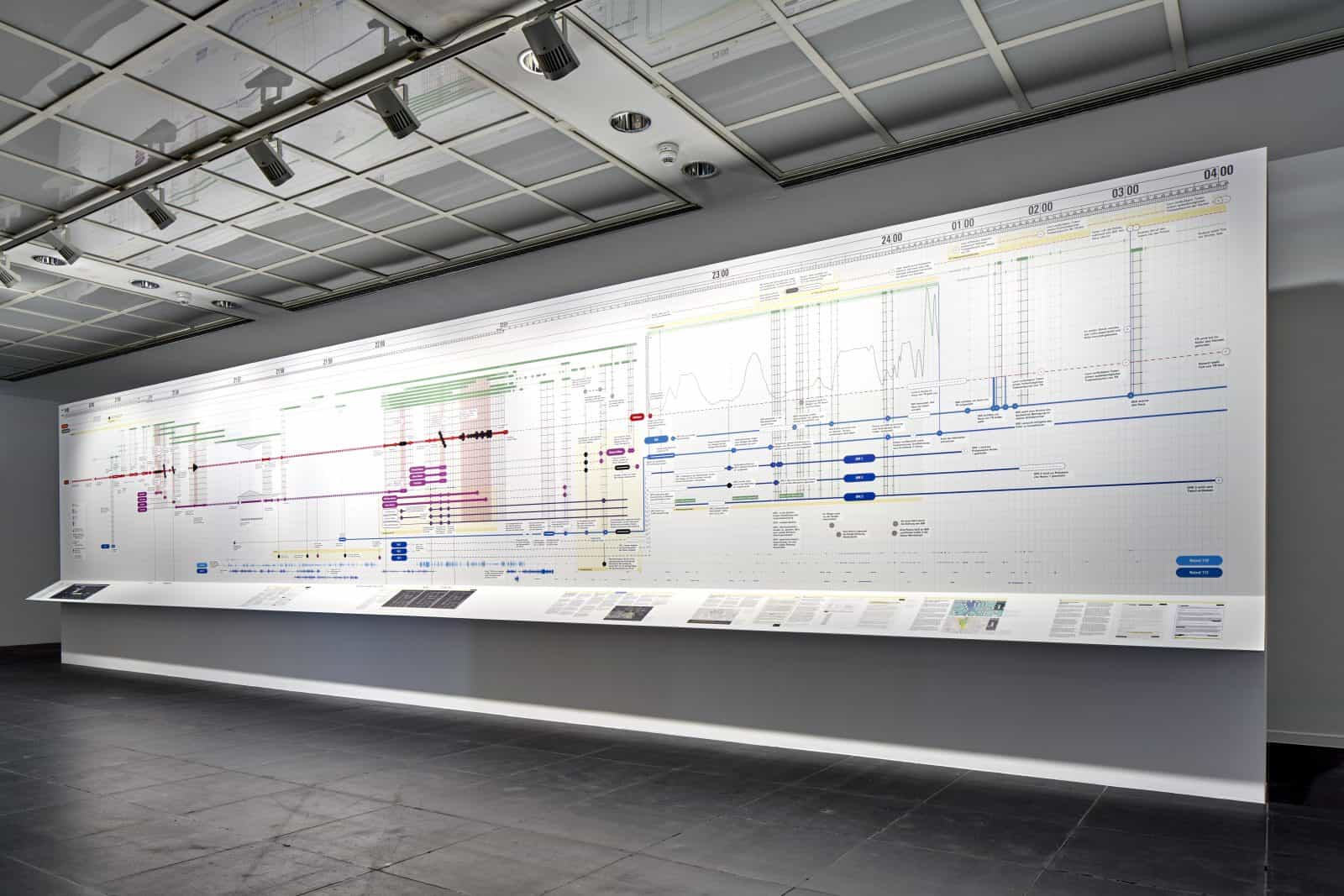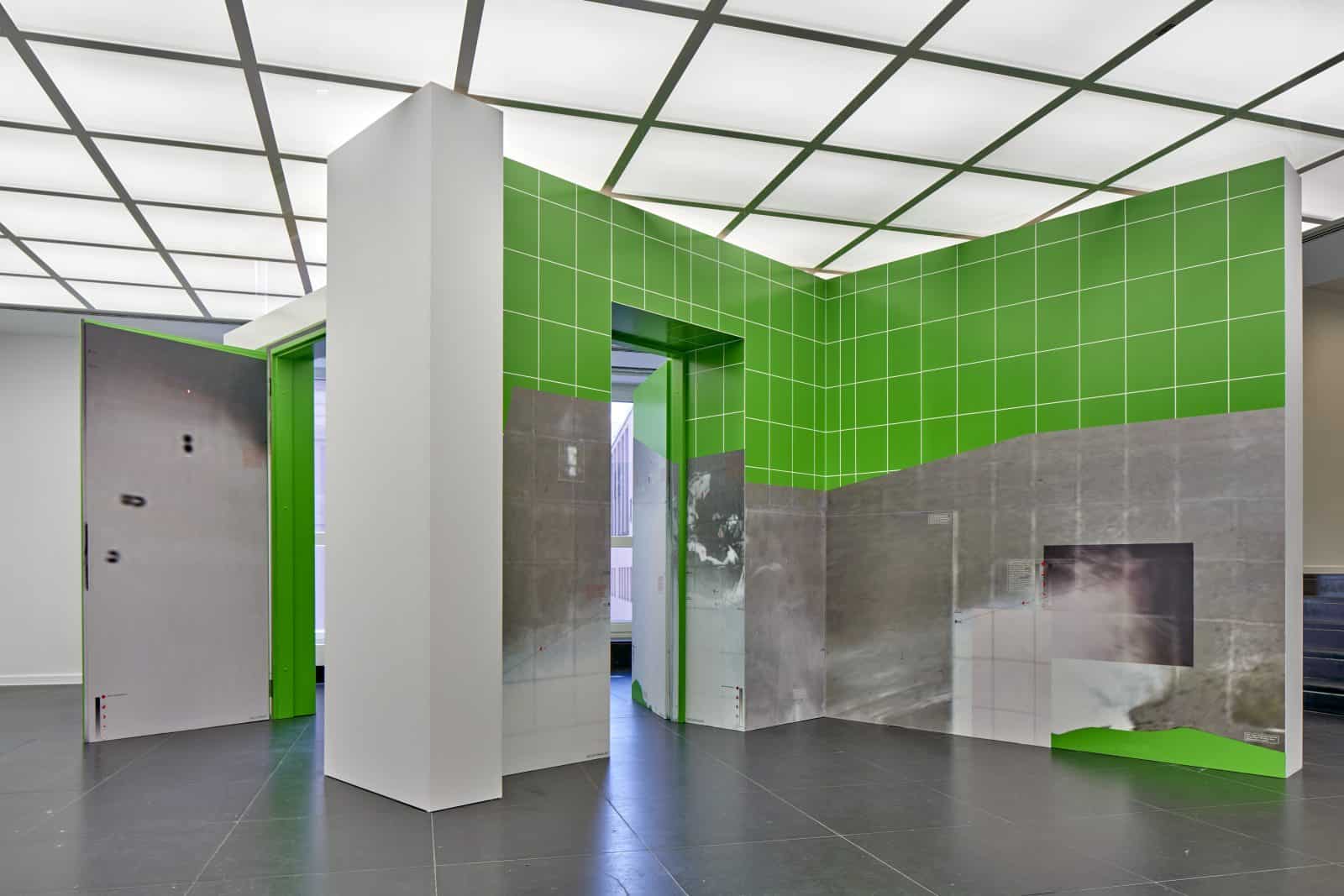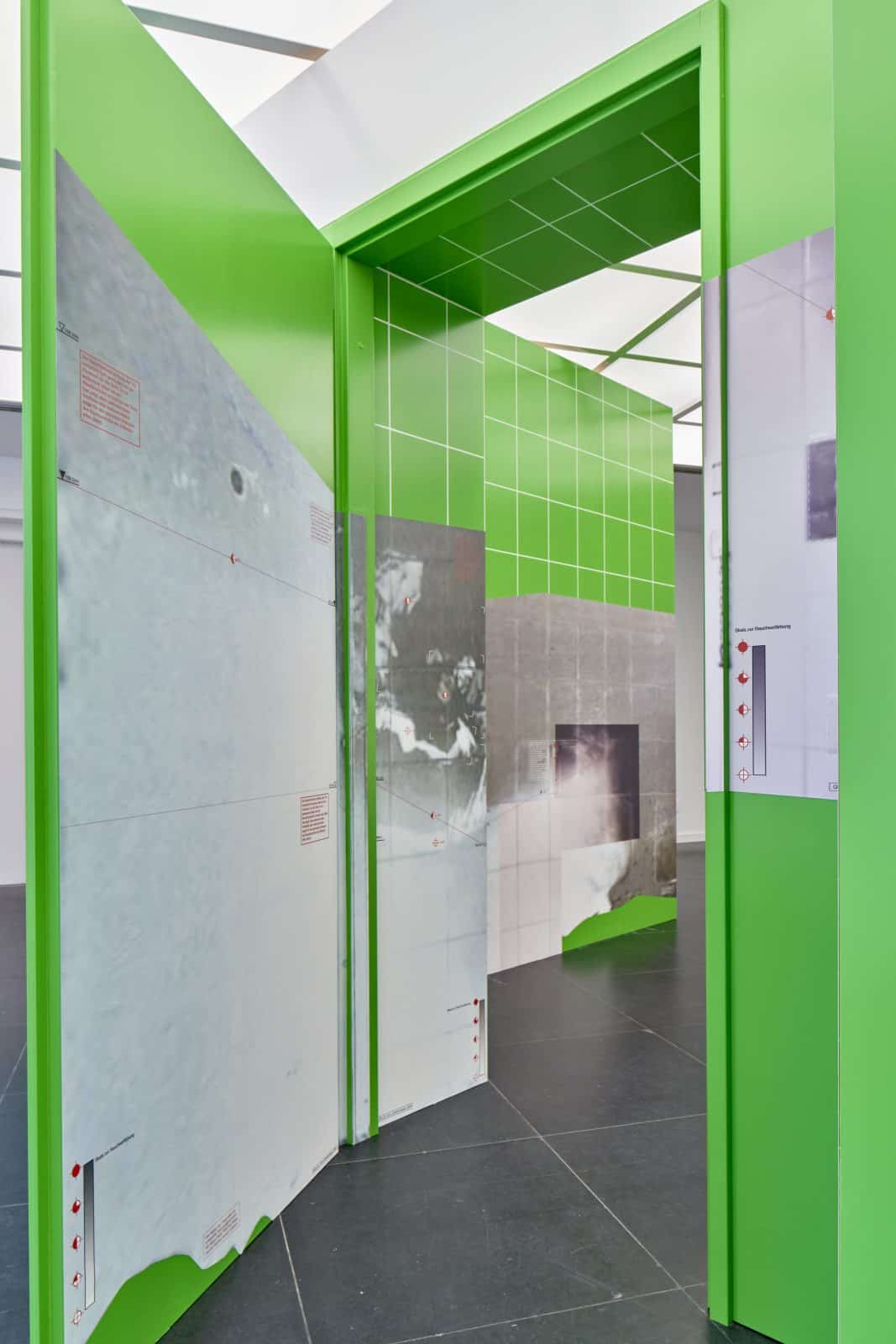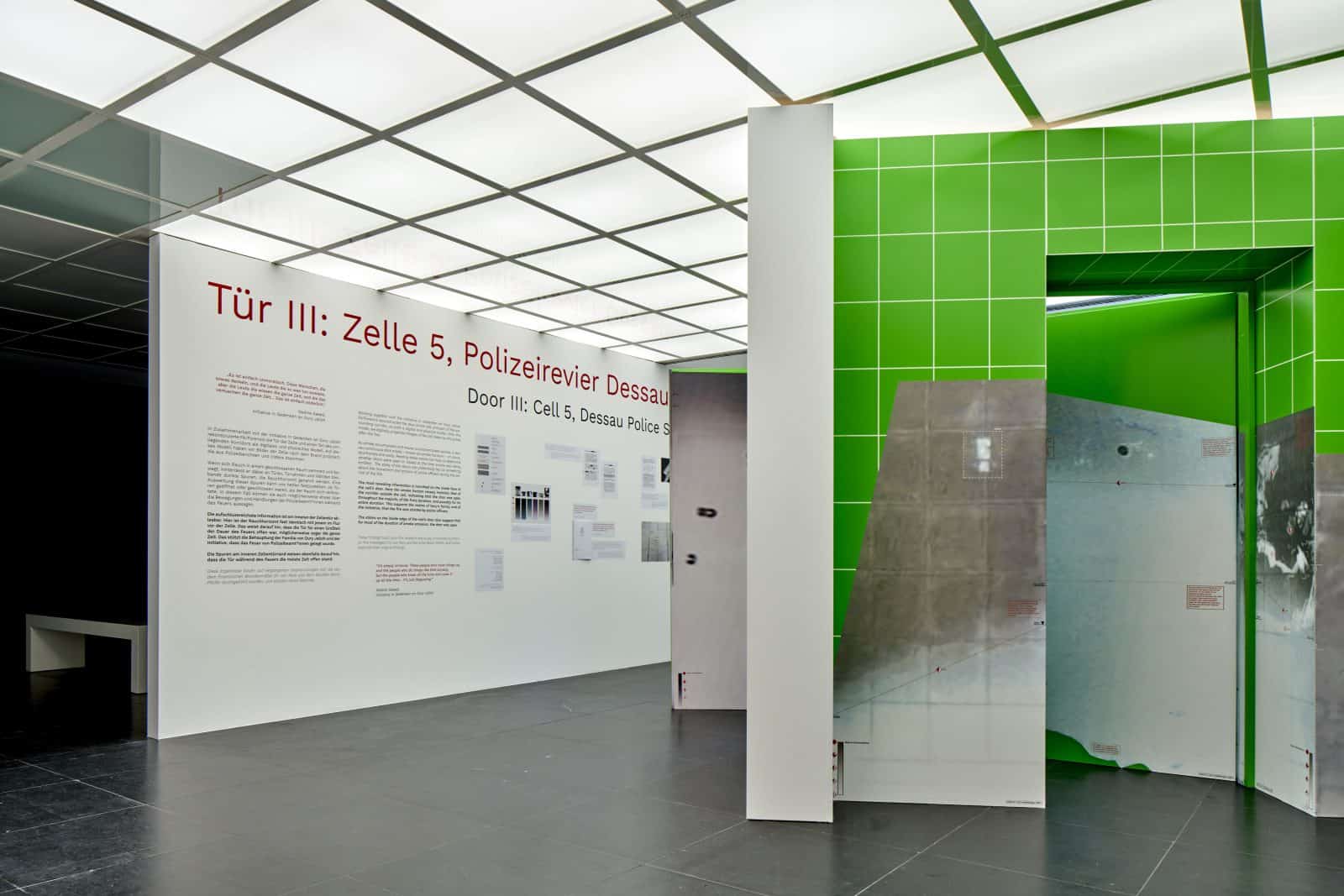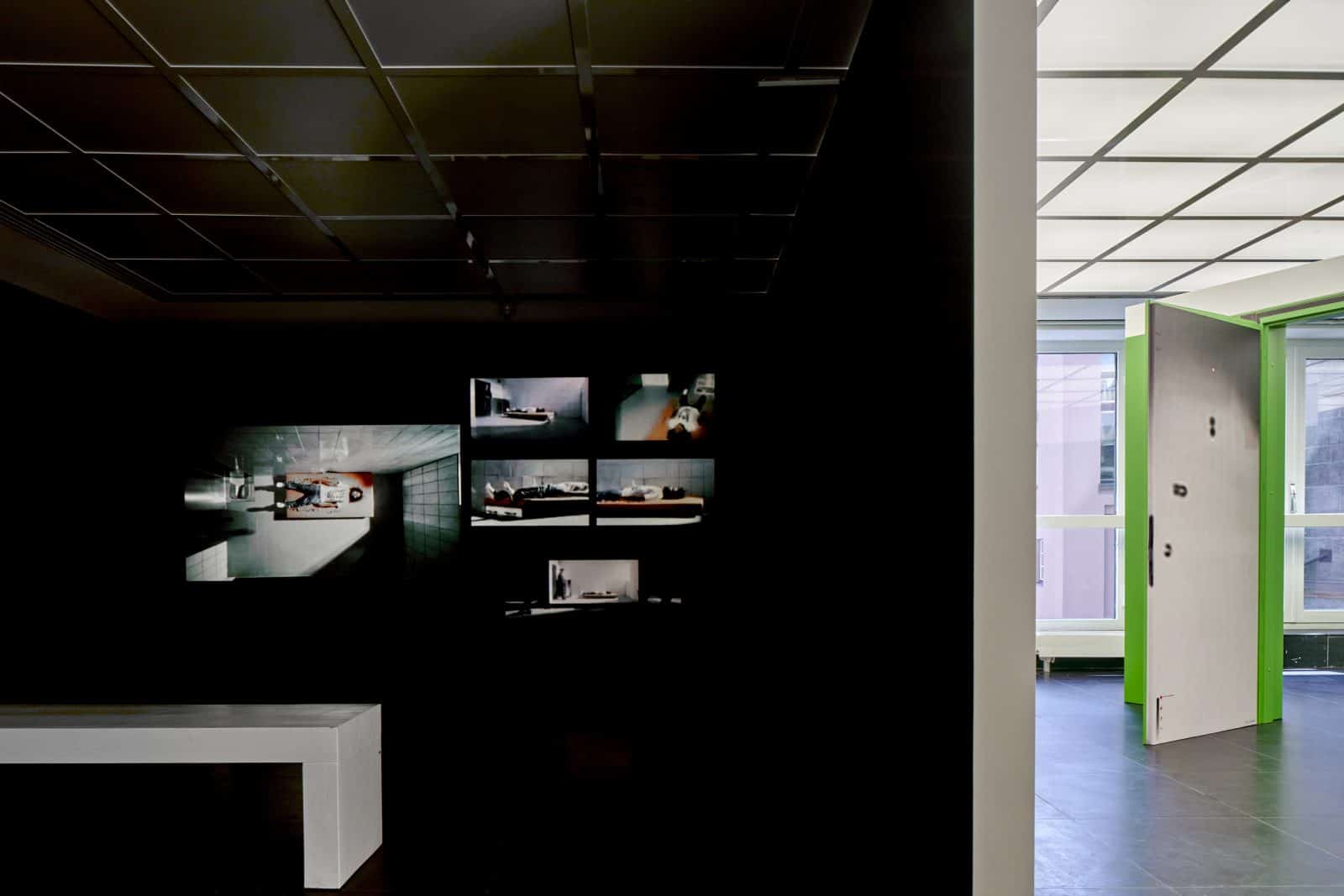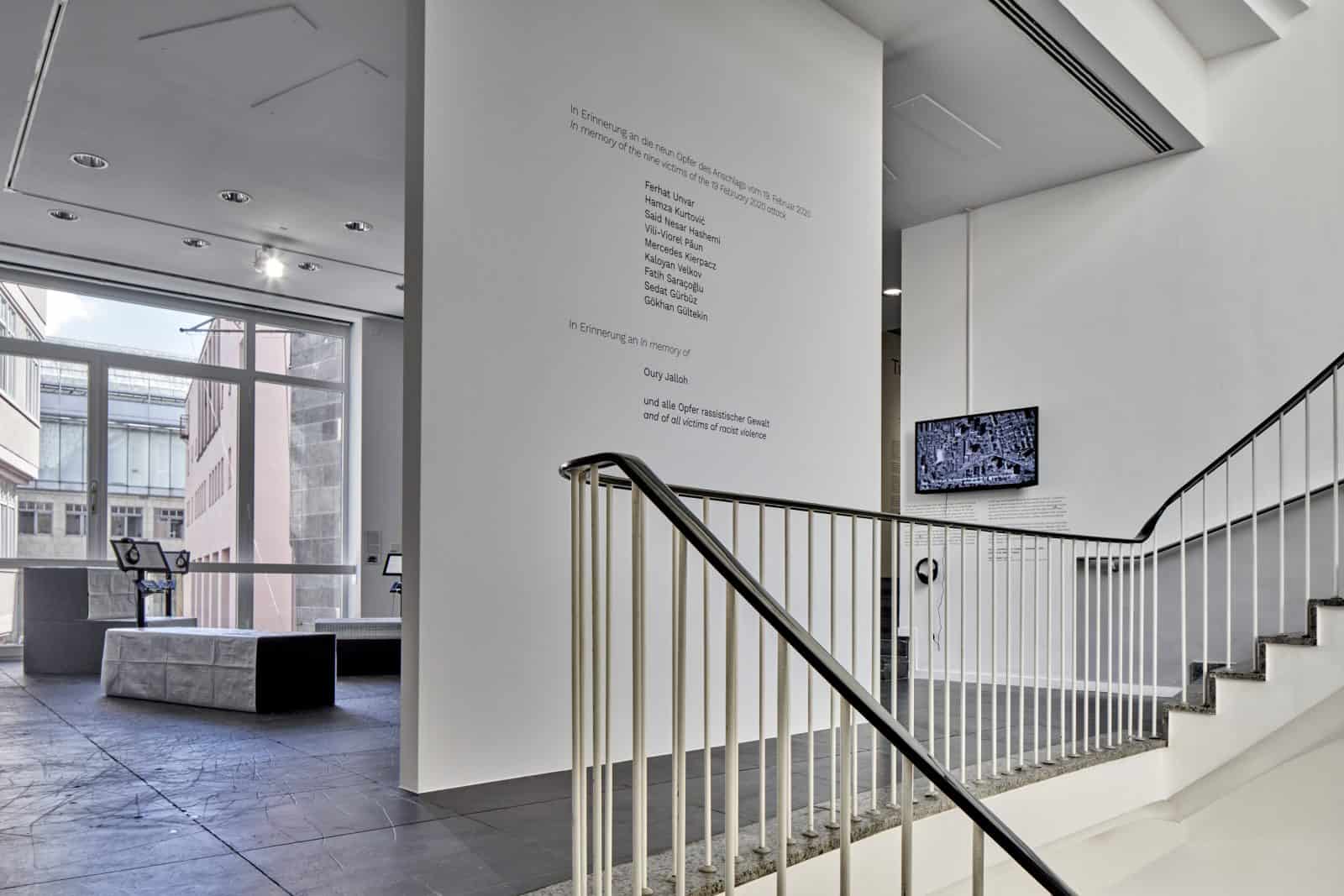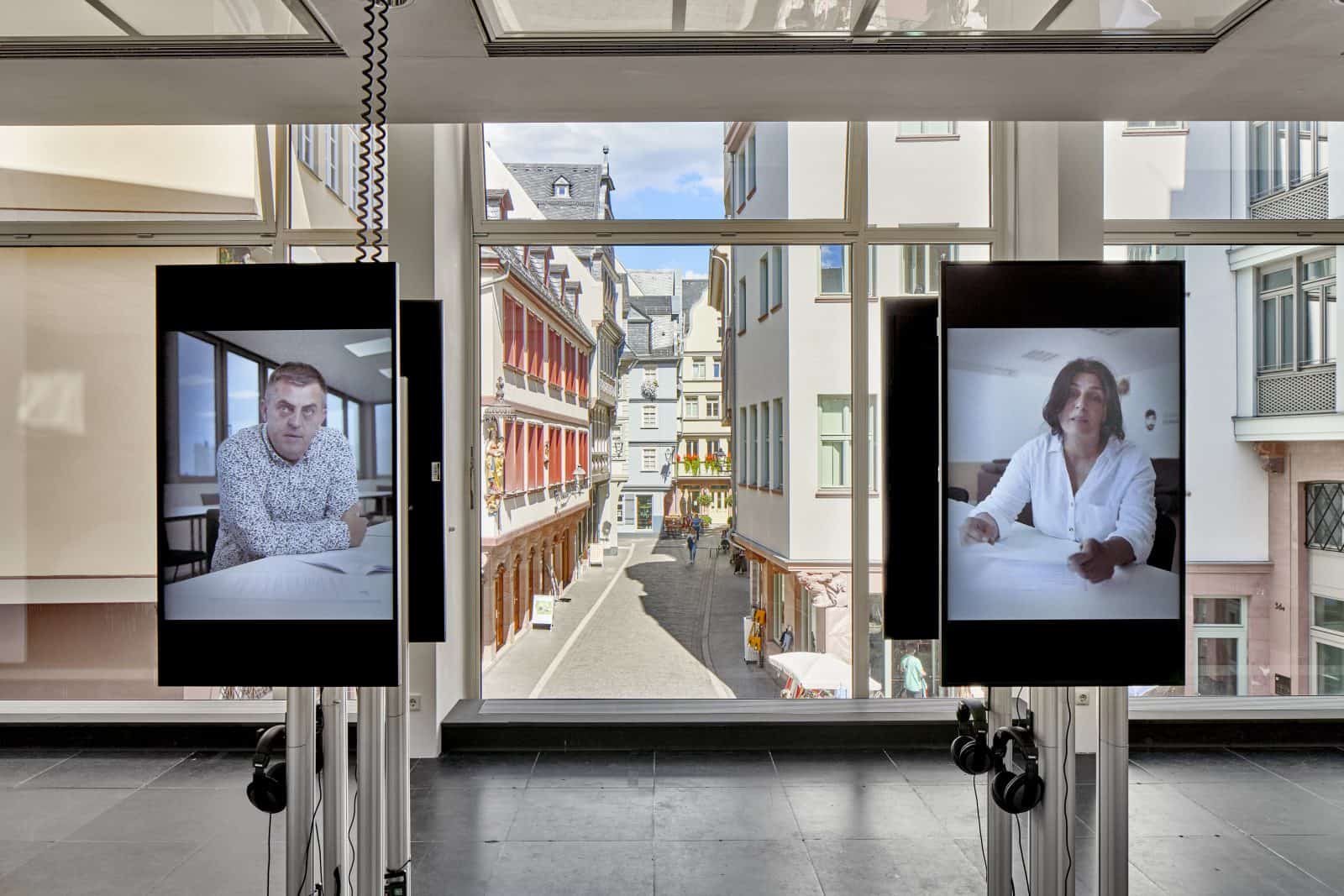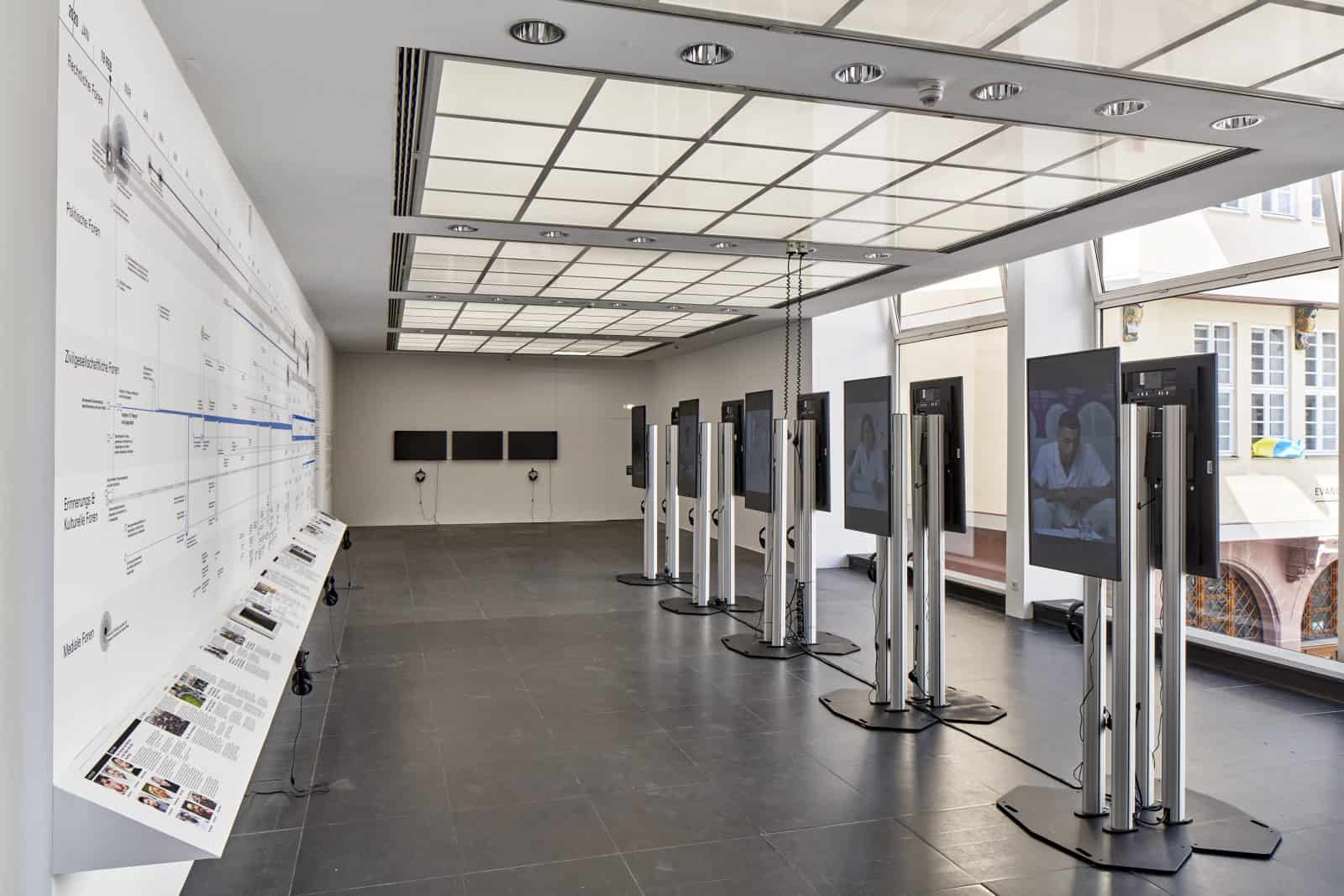Venue
Date
Exhibition Type
Opening on Thursday, June 2, 2022, at 7 pm
The exhibition Three Doors – Forensic Architecture/Forensis, Initiative 19. Februar Hanau, Initiative in Gedenken an Oury Jalloh is a collaboration between research agency Forensic Architecture, Forensis, Initiative 19. Februar Hanau, Initiative in Gedenken an Oury Jalloh, journalists and the cultural institution Frankfurter Kunstverein.
This exhibition is organised around three investigations, each concerned with a door, and an incident of racist violence in Germany. Doors are physical objects but also social contracts, determining what is private and public, state and civilian.
The status of each door – open or shut, locked or unlocked – shines light on the troubling relationships between racist perpetrators and state agencies in Germany.
The first door is the emergency exit of the Arena Bar in Kesselstadt, a district of Hanau, where six of the nine victims of the 19 February 2020 racist terror attack were murdered. Our analysis shows that two people could have survived the attack, if they had fled through the emergency exit – instead, survivors said that they did not try, because they knew it was routinely locked.
The second door is the front door of the perpetrator’s house, also in Kesselstadt, which was not secured by police. Armed and dangerous, he could have walked out again, to continue killing.
These two doors – closed, where they needed to be open – point to the over-policing and under-protection experienced by racialised communities in Germany, as well as to ongoing, systemic state failures and complacency concerning perpetrators of racist violence.
The third door is that of the police cell in which Oury Jalloh, an asylum seeker from Sierra Leone, burnt to death in Dessau on 7 January 2005. Working with the Initiative in Gedenken an Oury Jalloh, we analysed smoke stains left around the cell door, which suggest that Oury was likely murdered by the officers who held him in custody.
The events in Hanau and Dessau are eruptive moments of racist violence set against long-term social and institutional conditions. The pain and consequences of these murders will resonate over generations, and the pursuit of accountability may last for years.
Four other works provide context to the ongoing work of Forensic Architecture’s “counter-forensics”. The selected investigations explore racially motivated cases in Europe and the USA. They investigate and raise critical questions about national and international systemic racism as well as human rights violations.
In a room specially dedicated to the February 19 Hanau Initiative, ten newly produced videos document the testimonies of the relatives and survivors before the Hessian State Parliament’s investigative committee. The exhibition is introduced by the Initiative 19. Februar Hanau. Their video installations speak to the impact of the murders in Hanau on the lives of those closest to the victims, and their struggle for remembrance, clarification, justice, and consequences.
The journalists Dietrich Brants and Jan Tussing from SWR2 were also invited by the Frankfurter Kunstverein to produce a multi-part documentary series.
The public Forum kollektiver Wahrheitsfindung will accompany the exhibition. Participants will include representatives of affected families and victims of the attack in Hanau as well as the Initiative in Gedenken an Oury Jalloh and the Initiative 19. Februar Hanau, the artist collective Forensic Architecture/Forensis, experts on right-wing extremism and anti-racism, as well as lawyers and journalists.
The research is co-produced by Frankfurter Kunstverein with support from Haus der Kulturen der Welt (HKW).
Curator: Franziska Nori
#threedoorsFKV #saytheirnames #ouryjallohdaswarmord
Photo credit: Norbert Miguletz © Frankfurter Kustverein
